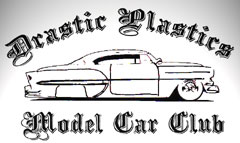Post by Bernard Kron on Jul 10, 2021 17:19:33 GMT -5

Maserati A6GCS/53 Barchetta – Mille Miglia 1954
In the immediate post WWII period, due to a major shortage of consumer products, automobiles became major symbols of mobility, social optimism and power. Owning a luxury or sports car was a top priority if one wished to show off one’s wealth, and small, specialist manufacturers quickly moved to fill the demand. Many of these makes would become legendary names known even today for their prestige and glamour.
The 5 Maserati brothers, Alfieri, Bindo, Carlo, Ettore, and Ernesto, had been producing bespoke racing cars since the early1920’s. The bustling port city of Bologna was their home and the source of the famous Trident symbol emblazoned on Maseratis, the symbol of Neptune, the Roman god of the sea. Alfieri Maserati died in 1932 from complications resulting from a grave 1927 racing accident, but Bindo, Ernesto, and Ettore continued to operate the shop. In 1937 they sold it to the wealthy industrialist Adolfo Orsi with the brothers contracted to stay on a further 10 years. It was Orsi who guided the company from its racing roots to it’s emergence as the international brand it has become today, moving the company to its now-famous home in Modena.
This car, the six cylinder DOHC twin-plug 2 liter A6GCS/53, was the pivotal car in Maserati’s rise. First produced in 1947, the A6 series, the first production Maseratis, was based on a motor developed by the brilliant engineer Gioacchino Colombo, who would gain world renown for his 2 liter Ferrari V12, on a simple parallel tube chassis created by Ernesto Maserati. It was the barchetta roadster body modeled here, that first defined Maserati as a player in the European racing sports car scene after Orsi signed Juan Fangio to the team late in 1952. 50’s Masers were all only produced in small numbers, rarely exceeding 50 examples. While only 4 A6GCS/53 berlinettas (coupes) were produced, 52 of these open cockpit racing sports cars were built, their trend-setting curvaceous bodies designed and constructed by Menardo Fantuzzi. So many that they became the weapon of choice for gentleman racers in the mid-50’s, especially in Italy and France, but even extending to North and South America. Fantuzzi was another beneficiary of Maserati’s success, his Modenese shop creating most of the iconic Maserati and Ferrari racing sports car and open wheel bodies extending well into the early 60’s.
This model is based on a relatively crude lump of solid resin, a curbside, of obscure and unknown origin that I purchased on eBay recently. The wheels and tires were molded as a single unit, there is a simple chassis piece with a flat bottom completely devoid of any detail, the upper half of the chassis containing the floor and transmission hump of the interior. A separate dashboard, steering wheel, seats, headlight and taillight lenses, and windscreen were supplied. However there was no flange for mounting the clear windscreen, even though it is the correct shape for the car. The solid resin plug of a body is also largely correct as a representation of the car.
This was my first effort at building this sort of small production resin car model. I decided I would attempt to use as much of the original “kit” as possible. The wheels and tires were painted flat black. Then I dry-brushed Aluminum Plate metalizer on the spokes and detailed the rims and knockoff hubcaps with Molotow chrome. I added some further interior detail to the somewhat incorrect kit interior. The real cars were totally devoid of any upholstery other than on the seats and the body sides were completely bare with their tubular framing totally exposed. This model had the quilted padding often seen on streetable Italian Gran Turismo cars of the era. For this reason I added some door paneling as well. The kit body was open behind the seats while the real cars hid their gas tanks behind a bare aluminum panel. So I added a curved panel at the rear of the cockpit.
This represents an actual entrant from the 1954 Mille Miglia, one of no fewer than 14 (!) entered. While Luigi Musso famously finished 3rd that year in the #500 car, this car, #514, driven by Luigi Bosisio with Pier Luigi Ercole in the navigator’s seat, was a DNF. The 514 most closely matched the kit bodywork and grill, and besides I thought 514 looked better on the car than 500… The numbers referred to the time each car left the starter’s ramp, small displacement production cars leaving first the previous evening, each car separated by 1 minute, with the largest engined, fastest pure racing cars leaving shortly after 6 AM the next morning. The 514 car left at 5:14 AM. The paint is Tamiya Italian Red and the decals are from Patto’s Place in Australia.
Thanx for lookin’,
B.







 It's an interweb thing.....
It's an interweb thing.....